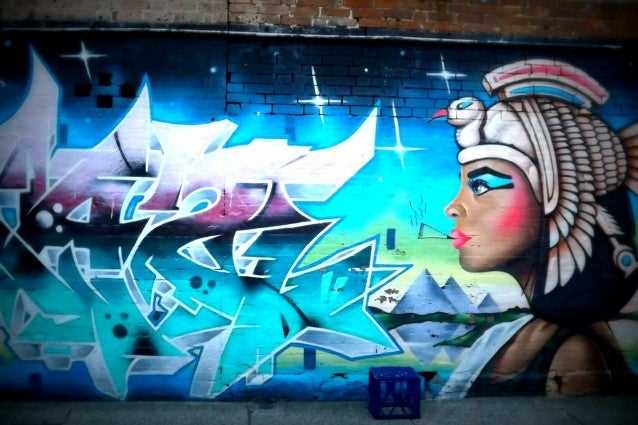
Graffiti art is a vibrant and expressive form of artistic expression that has become a prominent feature of urban landscapes around the world. This unique art form is characterized by its bold colors, intricate designs, and political or social messages. Graffiti artists use walls, buildings, and other public spaces as their canvas, transforming drab surfaces into captivating works of art that engage and inspire.
What sets graffiti art apart from traditional art forms is its rebellious nature and its focus on public visibility. Graffiti artists often work covertly under the cover of darkness, using spray paint, stencils, and markers to create their pieces. They seek to challenge societal norms, provoke thought, and shine a light on important issues that may be overlooked.
One of the most fascinating aspects of graffiti art is its ability to engage the viewer on a deeper level. The vibrant colors and intricate designs draw the eye, while the underlying messages spark conversations and ignite emotions. Whether it’s a political statement, a critique of consumerism, or a celebration of local culture, graffiti art has the power to evoke strong reactions and shape public discourse.
Despite its underground origins, graffiti art has garnered recognition and appreciation from the mainstream art world. Many renowned graffiti artists have made the transition from underground street art to galleries, museums, and even commercial ventures. Their unique style and unconventional techniques have captivated audiences, leading to collaborations, exhibitions, and even commissions.
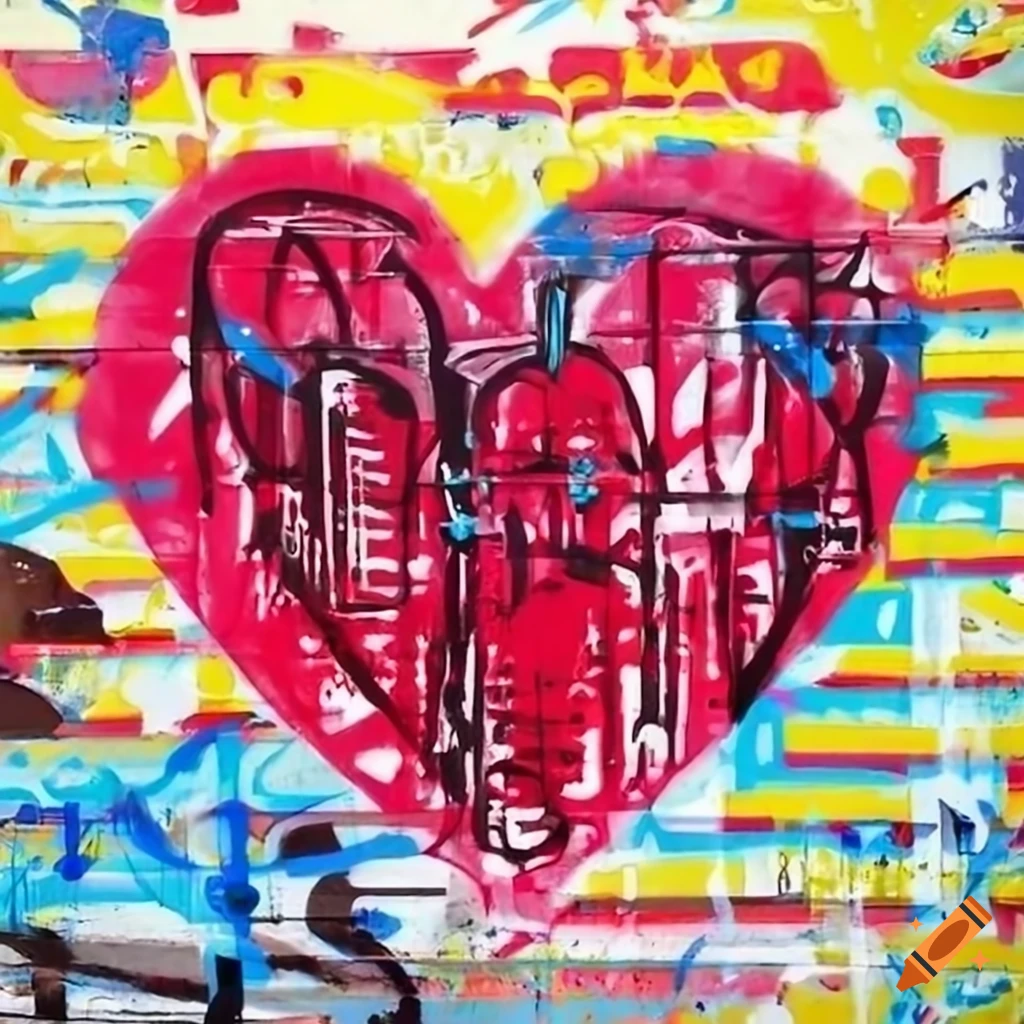
Graffiti art has a rich and fascinating history that dates back to ancient times. Its roots can be traced back to the ancient civilizations of Egypt, Greece, and Rome, where people would write and draw on walls, buildings, and other public spaces. These early forms of graffiti often served as political or social commentary, as well as a means of communication.
Fast forward to the 20th century, and graffiti art began to take on a new and more modern form. In the 1960s and 1970s, graffiti emerged as a form of expression within the urban communities of New York City. Street gangs and youth culture played a significant role in the development of this early graffiti movement.
The art form gained popularity and recognition in the 1980s when artists like Jean-Michel Basquiat and Keith Haring started incorporating graffiti-style elements into their work. These artists helped bring graffiti art into the mainstream, and their influence can still be seen in contemporary street art today.
The Rise of Graffiti as a Global Phenomenon
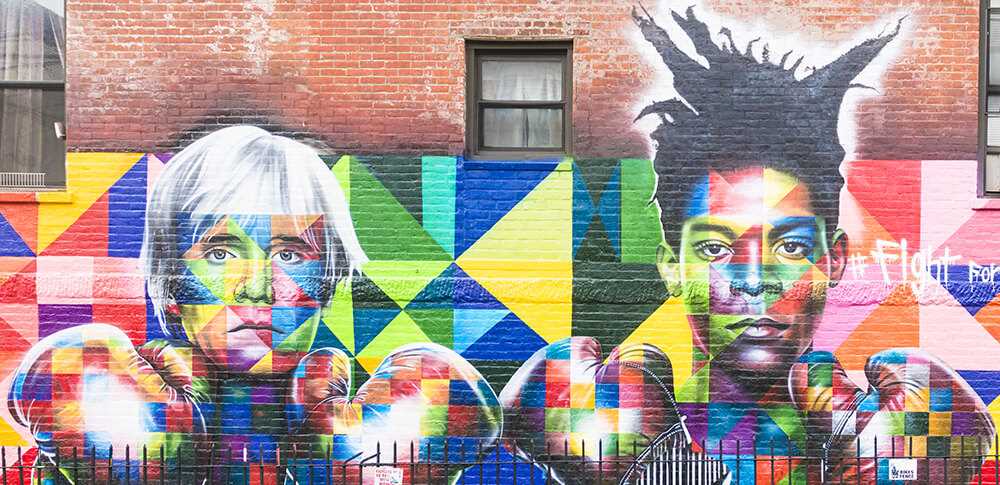
Graffiti art continued to evolve and spread across the globe, with different regions and cultures putting their own unique spin on the art form. In the 1980s and 1990s, graffiti became a symbol of rebellion and an outlet for marginalized communities to express themselves.
Cities like Berlin, London, and Sao Paulo became hotspots for graffiti artists, with entire neighborhoods dedicated to the art form. Graffiti art festivals and events started popping up across the world, showcasing the talents of local and international artists.
Graffiti in the Digital Age
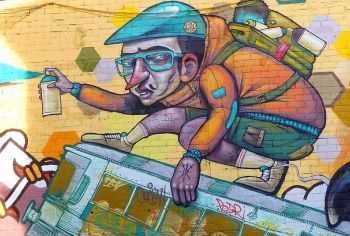
In recent years, graffiti art has adapted to the digital age. Artists now use technology to create and share their work, utilizing social media platforms and digital tools to reach a wider audience. Digital graffiti can be seen on screens, buildings, and even virtual reality spaces.
Despite evolving and changing over the years, graffiti art remains a powerful form of self-expression and a means of reclaiming public spaces. From its ancient origins to its present-day manifestation, graffiti art continues to push boundaries and challenge societal norms.
The Various Styles of Graffiti
Graffiti art is a diverse and versatile form of expression that comes in many different styles. Each style is unique and showcases the individuality and creativity of the artist. Here are some of the most popular styles of graffiti:
- Tagging: Tagging is the most basic and widespread style of graffiti. It involves the artist’s signature or “tag” being quickly and efficiently painted or written on a surface. Tags are often simple, stylized letters and are used to mark territory or leave a mark.
- Throw-ups: Throw-ups are larger and more elaborate than tags. They are quick, bubble-like letters outlined in a solid color and are usually filled in with a second color. Throw-ups are often used to create simple yet eye-catching pieces and are done with speed and efficiency.
- Pieces: Short for “masterpieces,” pieces are larger and more intricate graffiti works. They often consist of highly detailed letters or characters, using a wide range of colors, shading, and 3D effects. Pieces can take hours or even days to complete and are considered the pinnacle of graffiti art.
- Stencils: Stencils are a popular style of graffiti that involves creating a design by cutting out shapes or patterns on a thin material. The stencil is then placed on a surface, and spray paint is applied over it. Stencils allow for more precise and detailed images and are often used to create political or social commentary.
- Wildstyle: Wildstyle is a complex and abstract style of graffiti that focuses on the intricate arrangement and overlapping of letters. It is often difficult to read and decipher, with letters blending together to create a visually stunning piece. Wildstyle requires a high level of skill and creativity to execute.
- Murals: Murals are large-scale graffiti works that cover entire walls or buildings. They often depict detailed scenes, portraits, or landscapes and can be highly realistic or abstract in nature. Murals are considered a more accepted and mainstream form of graffiti art and are often commissioned by businesses or communities.
These are just a few examples of the various styles of graffiti that artists use to create their unique and captivating pieces. Whether it’s a simple tag or an intricate mural, graffiti art continues to push boundaries and challenge traditional notions of art.
The Role of Tags in Graffiti Art
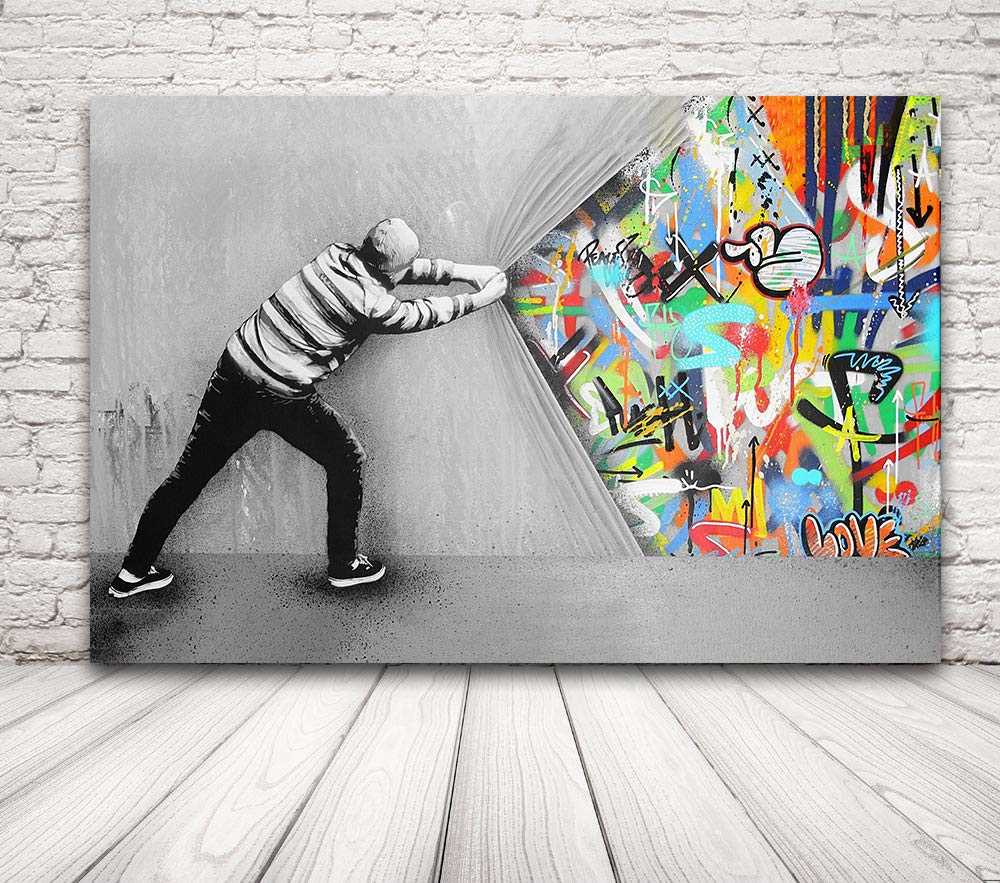
Tags play a significant role in graffiti art culture. They are the most basic and essential element of graffiti writing. A tag is a stylized signature or “tag name” that represents the artist or writer. It is their unique identity that they use to mark their territory and establish their presence in the urban landscape.
Tags are typically simple and quick to execute, often consisting of one or two colors and basic letterforms. They are usually done with spray paint or markers and can be found in various locations, including walls, train cars, and other public spaces.
While some may view tags as mere vandalism or illegal graffiti, they hold a crucial role in the graffiti art world. Tags serve as a way for graffiti artists to gain recognition and build a reputation within the graffiti community. The more widespread and visible a tag is, the more influential and respected the artist becomes.
In addition to personal branding, tags also serve as a form of communication between graffiti artists. They can convey messages, mark territories, and initiate conversations among fellow artists. Tags often act as a calling card or a visual dialogue, allowing artists to establish connections and collaborations.
Tags are a constant presence in the urban landscape, adding visual interest and injecting a sense of rebelliousness and creativity into the sometimes monotonous cityscape. They challenge traditional notions of art and ownership, transforming public spaces into galleries for self-expression.
While tags may be controversial and provoke mixed reactions, they are an integral part of the graffiti art movement. Whether seen as art or as vandalism, they cannot be ignored or dismissed. They shape the visual fabric of our cities and provoke discussion about the nature of art, public space, and personal expression.
| Tags in Graffiti Art |
|---|
| • Serve as the artist’s signature |
| • Establish artist’s presence |
| • Build reputation and gain recognition |
| • Convey messages and initiate conversations |
| • Transform public spaces into galleries for self-expression |
Street Art vs. Graffiti Art
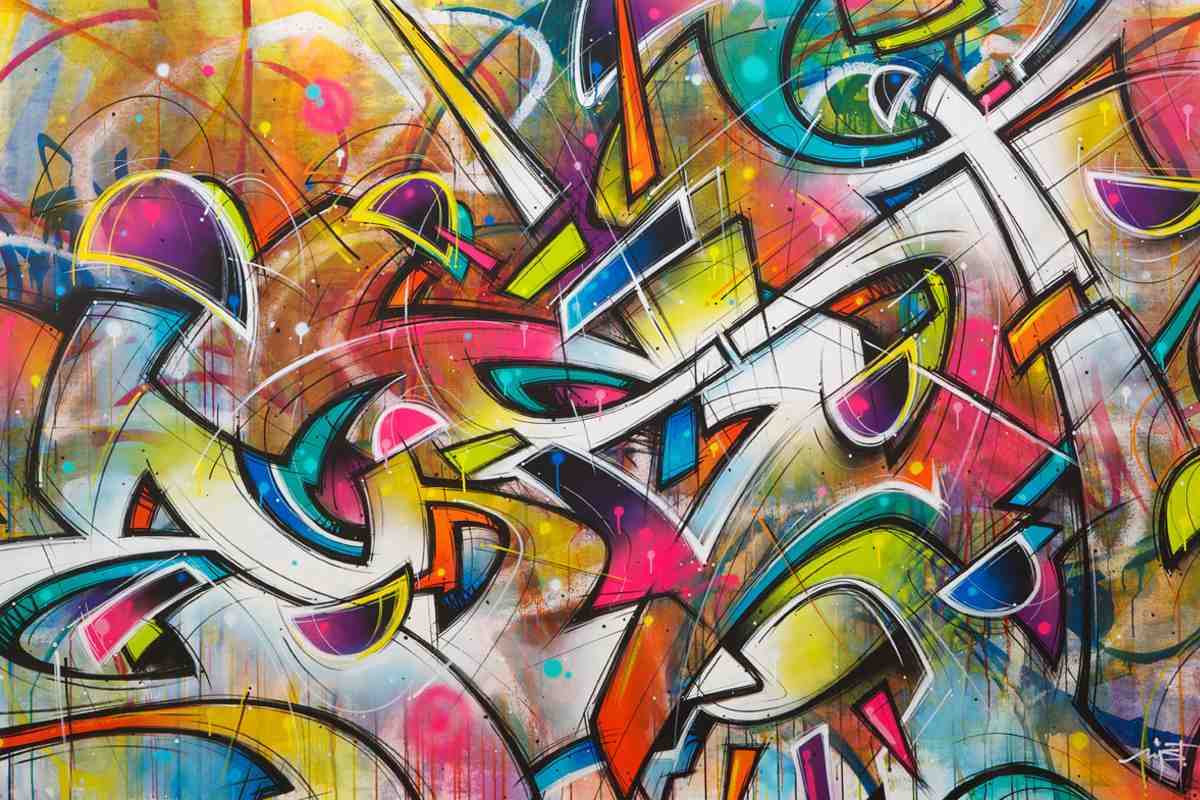
Street art and graffiti art are often used interchangeably, but they are distinct forms of artistic expression. While both involve creating art in public spaces, there are key differences that set them apart.
| Street Art | Graffiti Art |
|---|---|
| Street art is often created with the permission or collaboration of property owners and local authorities. Artists usually use legal mediums such as paintbrushes, stencils, and posters to create meaningful and aesthetically pleasing compositions. Street art can be found in various forms, including murals, installations, and sculptures. | Graffiti art, on the other hand, is typically created without permission and often considered illegal. Graffiti artists use spray paint, markers, and other tools to create bold, stylized lettering, images, and tags. Graffiti art is often associated with vandalism and is seen as a form of self-expression by those who engage in it. |
| Street art often carries a political or social message, aiming to provoke thought and create conversation within a community. It is seen as a legitimate form of art and can be highly regarded by both the general public and the art world. Many cities actively support and commission street art as a means to beautify and revitalize urban spaces. | Graffiti art, on the other hand, is often seen as a rebellious act and is considered illegal in most jurisdictions. It is often associated with gang activity, defacement of property, and a disregard for public spaces. However, graffiti art has also gained recognition as a unique and influential form of artistic expression, with some artists achieving mainstream success. |
| Street art and graffiti art have different motivations and audiences. Street art is generally created to enhance public spaces and stimulate conversation, while graffiti art is often created for self-expression and to leave a mark on the urban landscape. Both forms of art can be powerful in their own right and contribute to the cultural fabric of a community. | While there is a distinction between street art and graffiti art, it is important to recognize that both forms have their place in contemporary art. Whether it is a large-scale mural or a small graffiti tag, these art forms continue to evolve and shape the visual landscape of cities around the world. |
The Process of Creating Graffiti Murals
Creating a graffiti mural is a complex and intricate process that requires skill, creativity, and precision. It is a form of street art that allows artists to express their thoughts, emotions, and messages on a large scale. Here is a step-by-step overview of the process:
1. Design and Inspiration
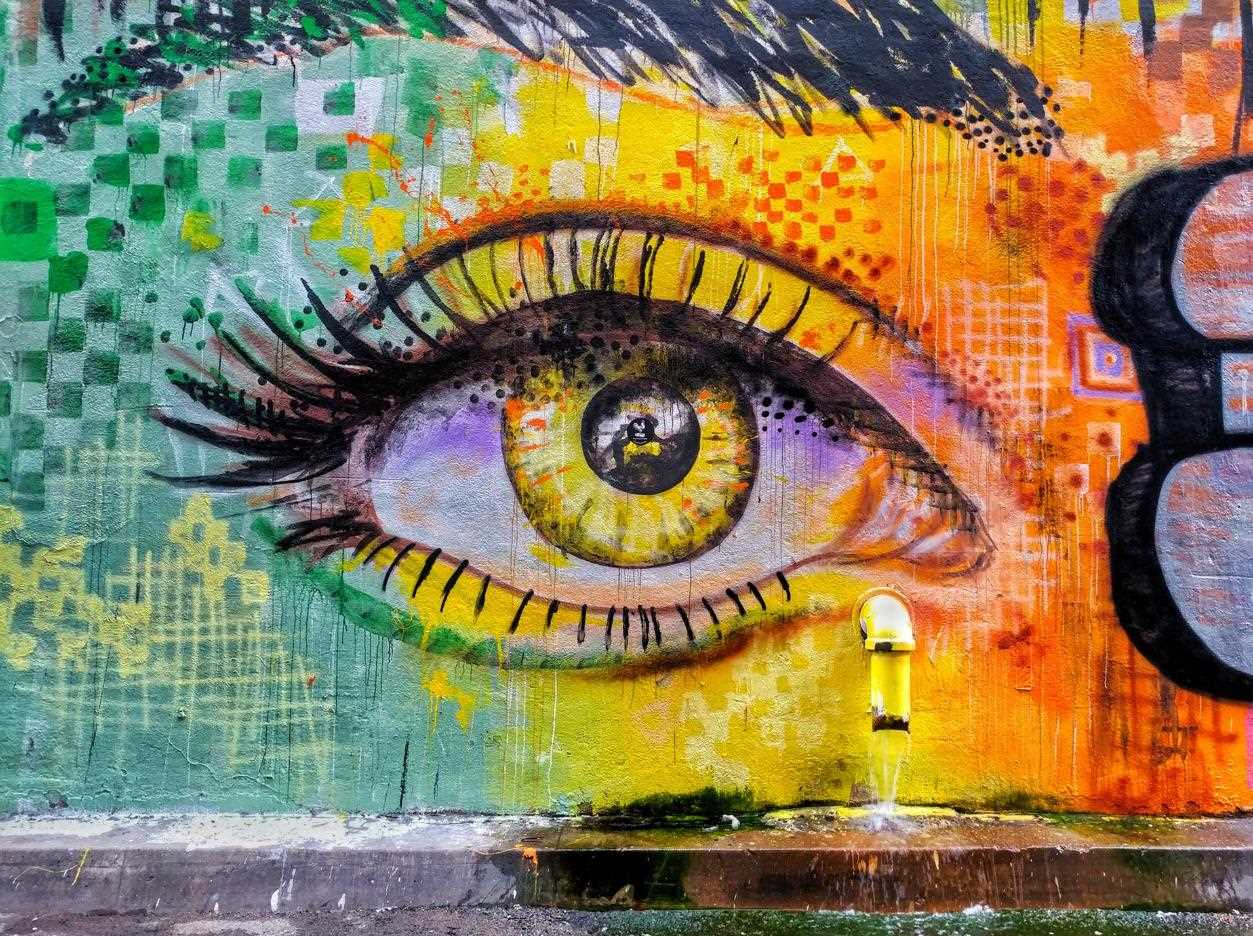
Before beginning the mural, the artist spends time sketching and planning the design. They draw inspiration from various sources, such as urban landscapes, personal experiences, or social issues. The design is carefully thought out to convey a specific message or capture the essence of the chosen subject.
2. Surface Preparation
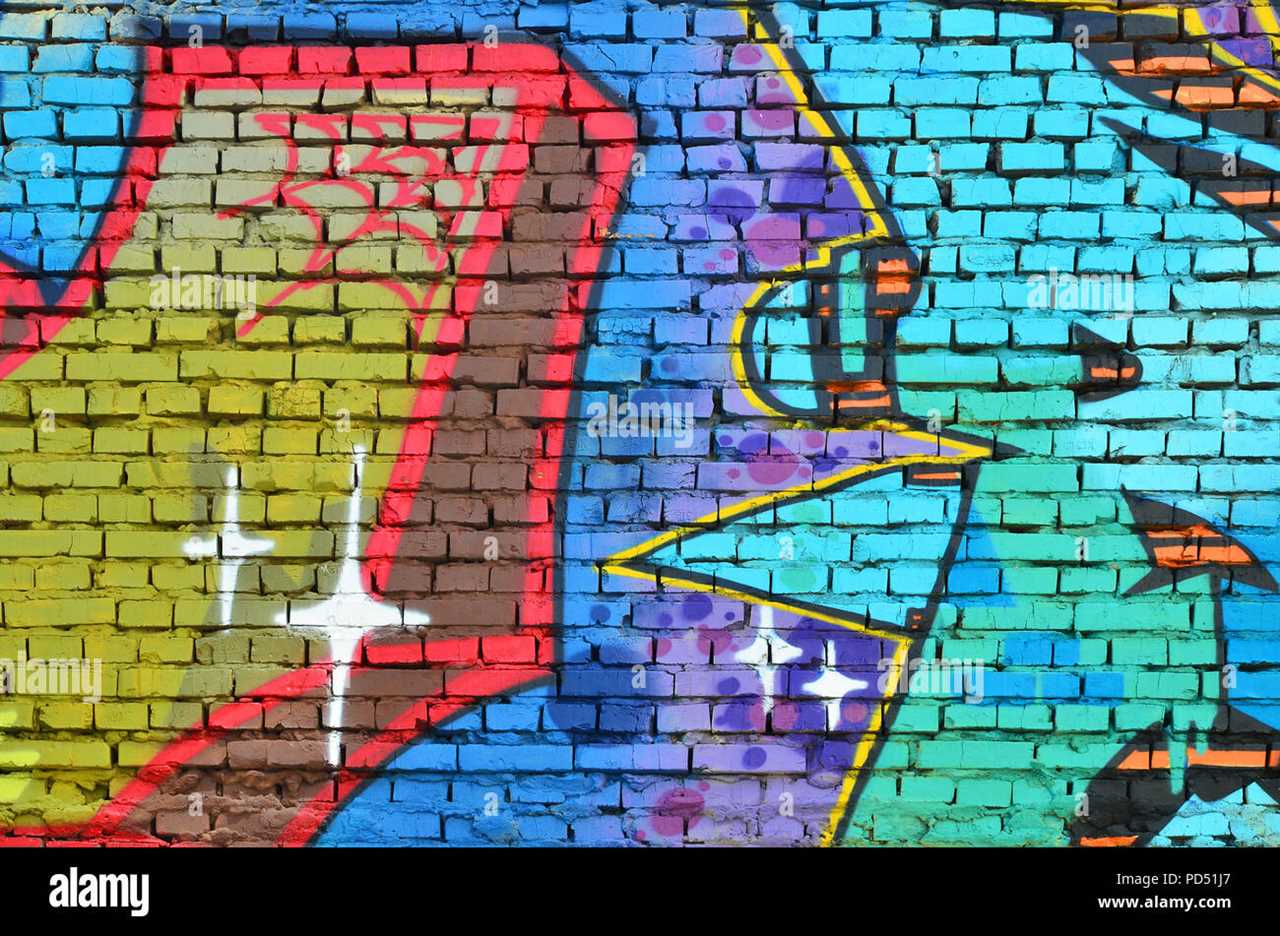
Once the design is finalized, the artist prepares the surface by cleaning and priming it. This ensures a smooth and durable base for the mural. Sometimes, a layer of primer is applied to enhance the adhesion of the paint to the wall, especially if it is an outdoor mural.
3. Gathering Supplies
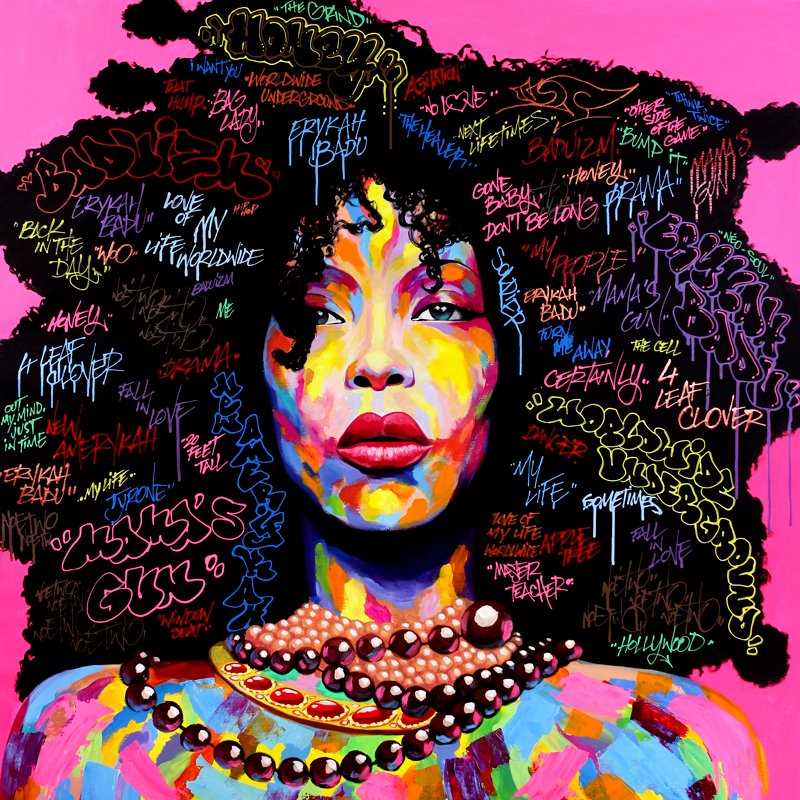
The artist gathers all the necessary supplies and tools, including paint cans, brushes, markers, stencils, and protective gear. Graffiti artists often use spray paint due to its vibrant colors and quick-drying nature. They may also use other techniques like stencil work or brush painting to add depth and details to the mural.
4. Execution
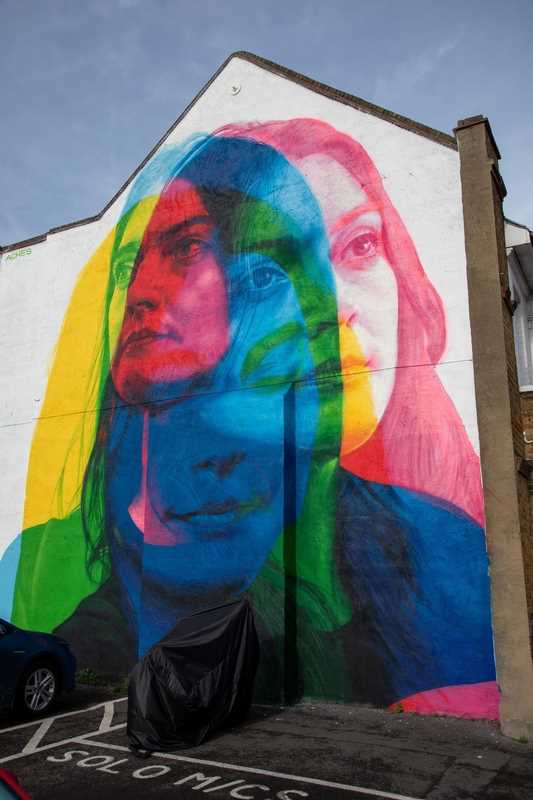
With the surface prepared and supplies at hand, the artist begins executing the mural. They start by outlining the main elements of the design using a pencil or markers. Once the outline is complete, they begin filling in the colors and adding details. Many graffiti artists prefer to work from top to bottom and left to right to ensure proper composition and prevent smudging.
During the execution, the artist has to be mindful of the surrounding environment and potential regulations or restrictions. They may have to work discreetly or seek permission from the local authorities or property owners to avoid legal issues.
5. Finishing Touches and Cleanup
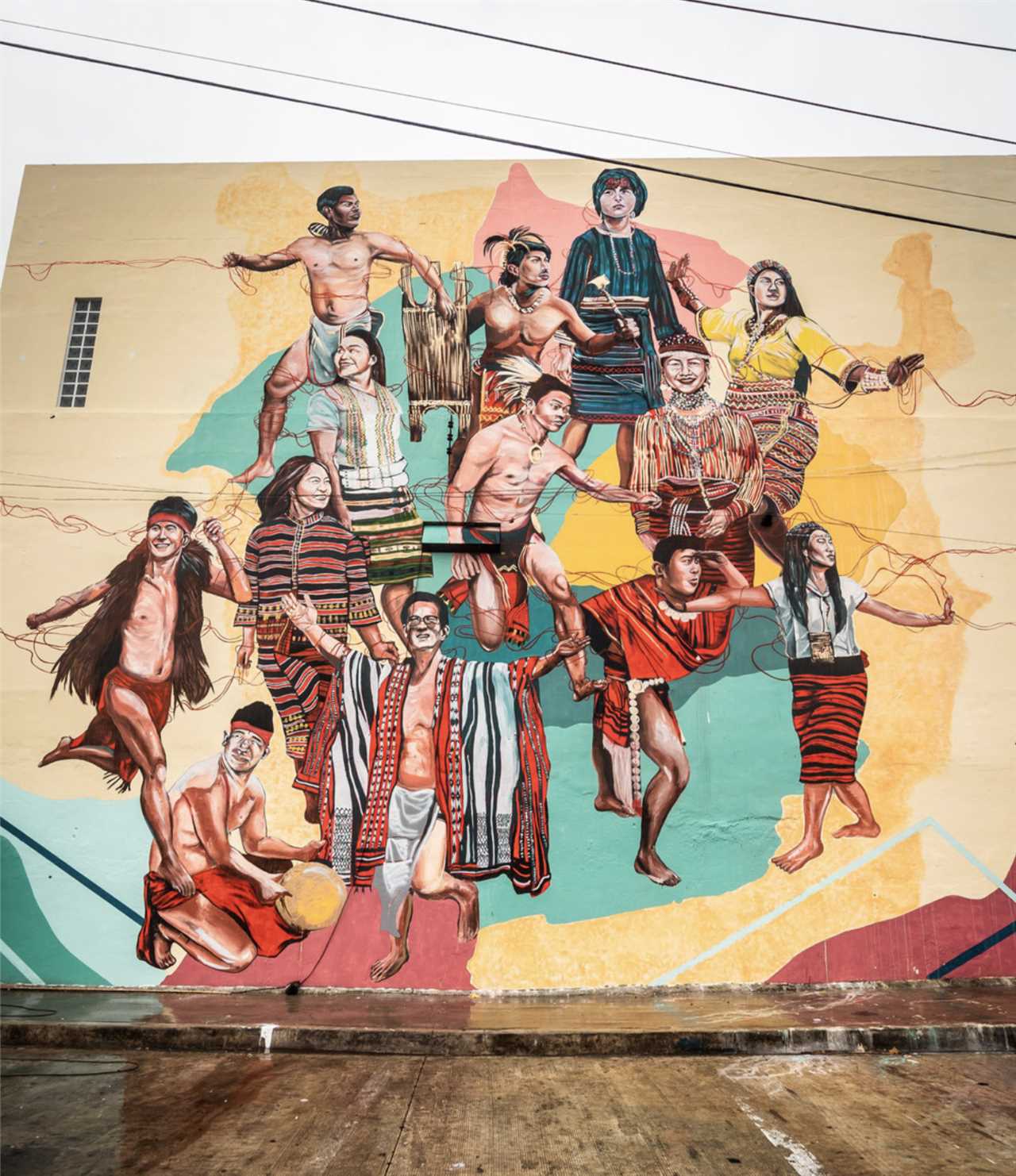
After completing the painting, the artist adds final touches and details to refine the mural. They may use different techniques like shading, blending, or adding highlights to create depth and dimension. Once satisfied with the final result, the artist cleans up the area, removing any paint cans, debris, or equipment used during the process.
Graffiti murals are temporary artworks that may fade, get covered, or be removed over time. However, they leave a lasting impact on the surrounding community and serve as a powerful means of self-expression and artistic communication.
The Use of Stencils in Graffiti Art
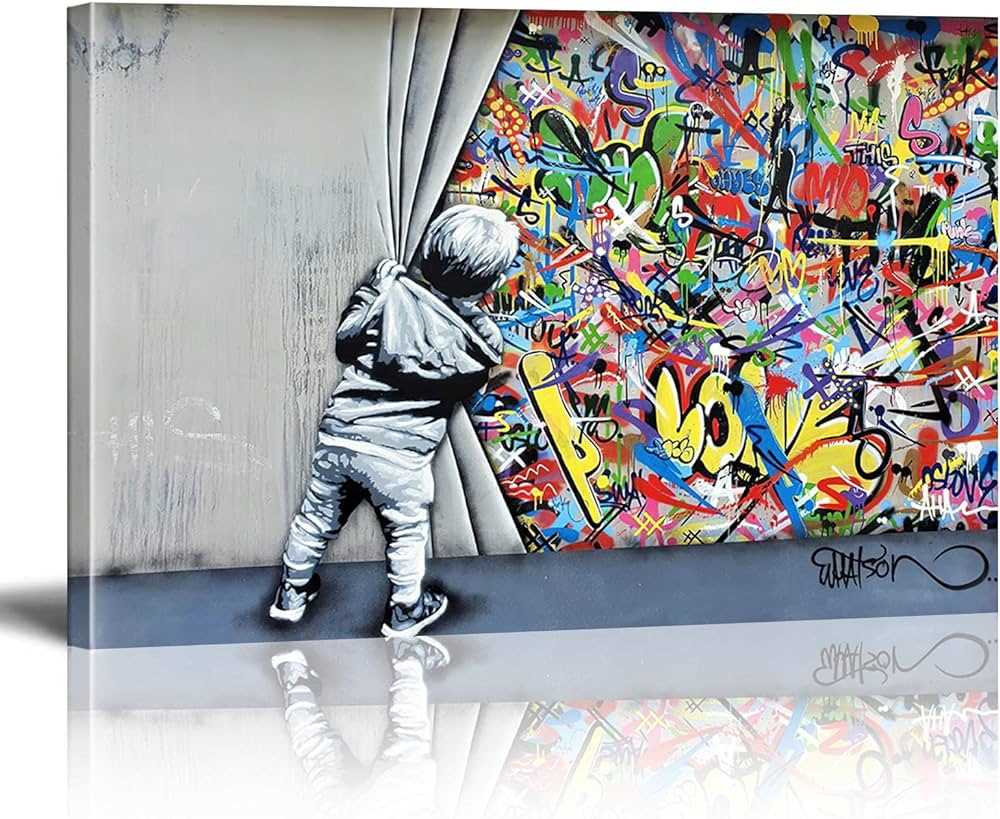
Graffiti art is known for its bold and vibrant designs that can be found on walls and other public spaces. One of the techniques commonly used by graffiti artists is the use of stencils. Stencils allow artists to create detailed and intricate designs with ease and precision.
By using stencils, graffiti artists can quickly reproduce their artwork on multiple surfaces. This is especially beneficial when creating large-scale murals or when working on time-sensitive projects. Stencils save artists time and effort, allowing them to focus on the creative process rather than the repetitive task of recreating their designs.
Creating Stencils
Creating stencils for graffiti art involves designing and cutting out shapes or patterns on a material such as cardboard or plastic. The cut-out shapes are then placed on the desired surface, and paint or spray paint is applied over the stencil to create the finished artwork.
Artists can create stencils by hand, using precision tools such as knives or scissors, or they can utilize technology, such as laser cutters, to create more intricate designs. Regardless of the method used, stencils allow artists to achieve a level of detail and consistency that would be difficult to achieve freehand.
Advantages of Using Stencils
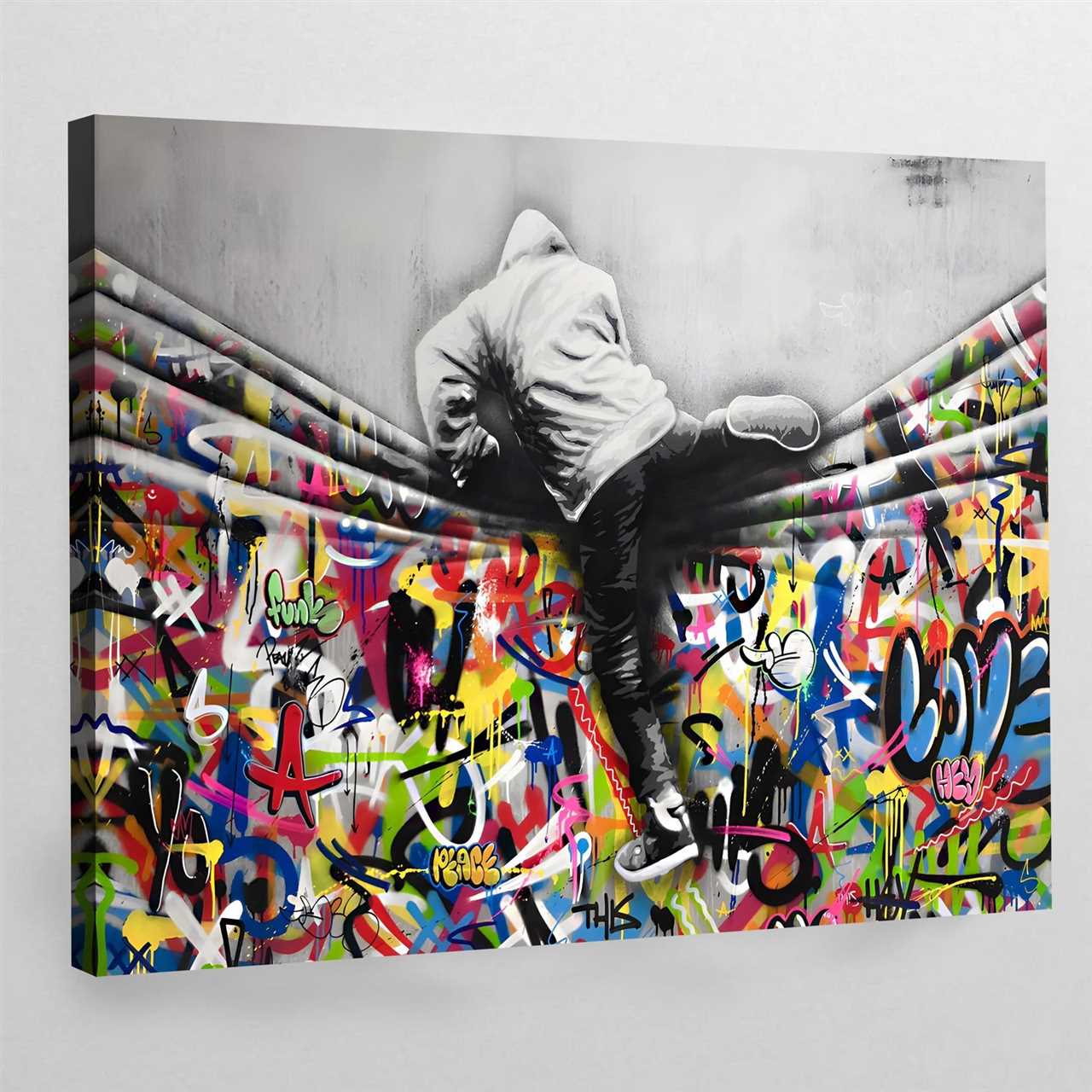
There are several advantages to using stencils in graffiti art. Firstly, stencils allow artists to create more complex designs with clean lines and smooth edges. This is particularly useful when working with intricate patterns or when incorporating text into the artwork.
Secondly, stencils provide a level of consistency to the artwork. Artists can easily replicate their designs across different surfaces, ensuring that their style remains recognizable. Stencils also allow for easier collaboration between artists, as they can share and exchange their stencils to create cohesive pieces of street art.
| Benefits of Using Stencils |
|---|
| 1. Allows for detailed and intricate designs |
| 2. Saves time and effort |
| 3. Provides consistency and replicability |
| 4. Facilitates collaboration between artists |
Colorful Techniques in Graffiti Art
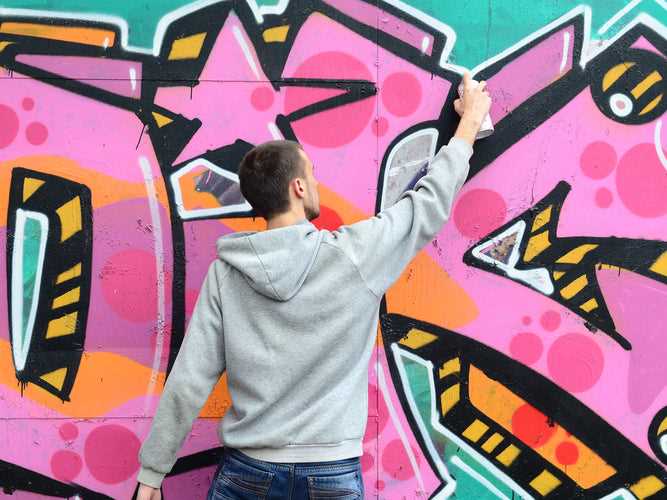
Graffiti art is known for its vibrant and eye-catching color schemes. Artists use various techniques to achieve the colorful and dynamic effects that make their works stand out. Here are some of the techniques commonly used in graffiti art:
1. Spray Paint
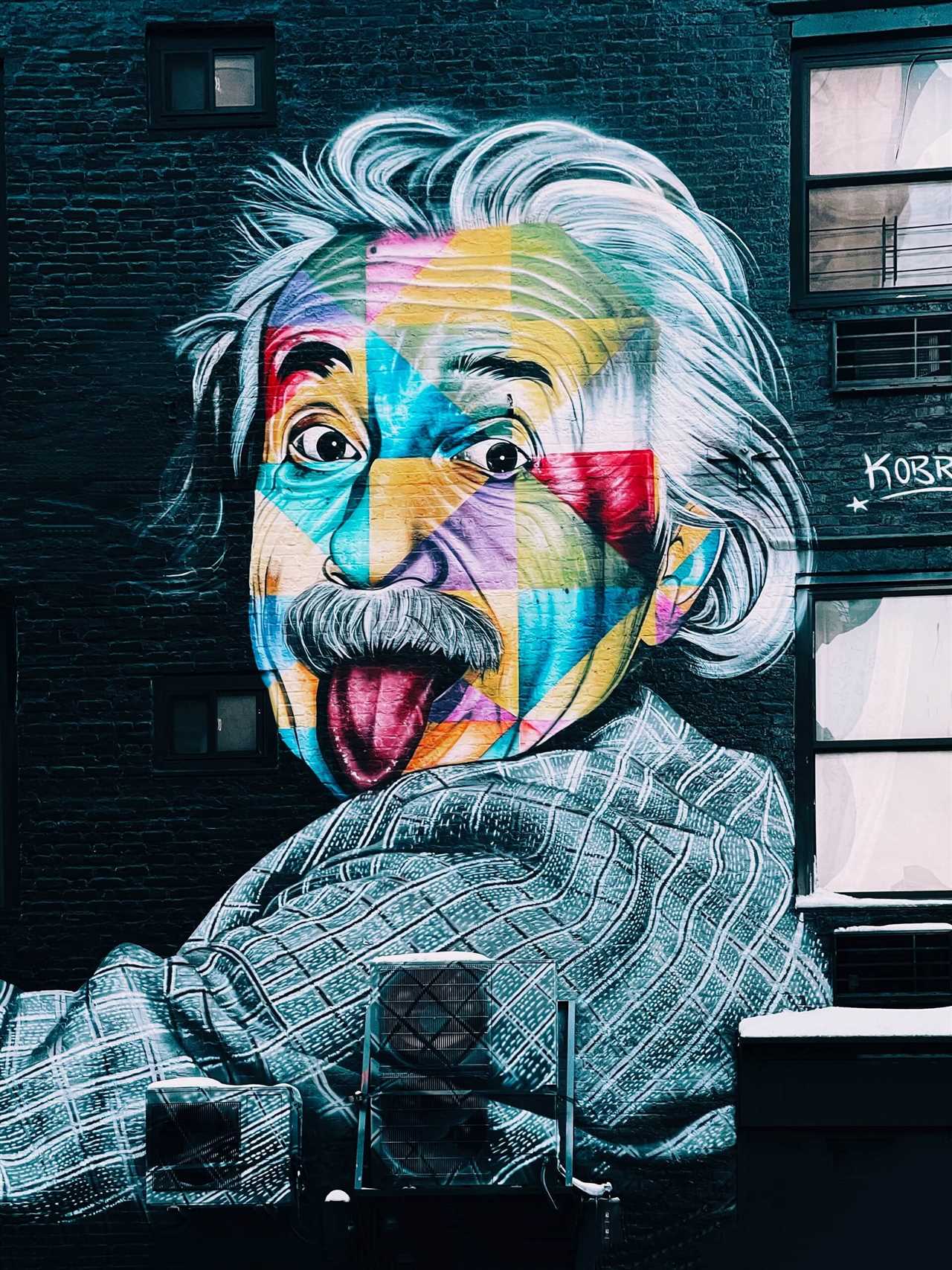
- One of the most popular and widely used techniques in graffiti art is the use of spray paint.
- Artists create intricate and detailed designs by manipulating the spray can’s nozzle, controlling the flow and direction of the paint.
- They can create different textures and effects by varying the pressure applied and the distance from the surface being painted.
2. Stenciling
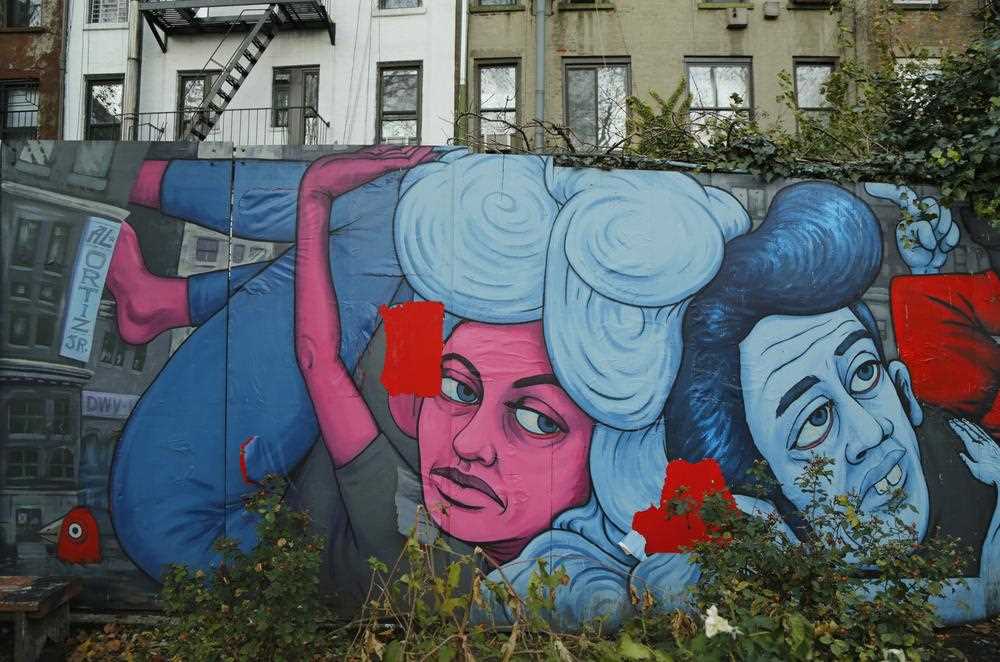
- Stenciling is another technique commonly used in graffiti art.
- Artists create stencils by cutting out designs on a thin, flexible material such as cardboard or plastic.
- They then spray paint over the stencil onto a surface, creating a clean and precise image.
- This technique allows artists to repeat the same design multiple times, creating patterns and adding depth to their artwork.
3. Drip and Splatter
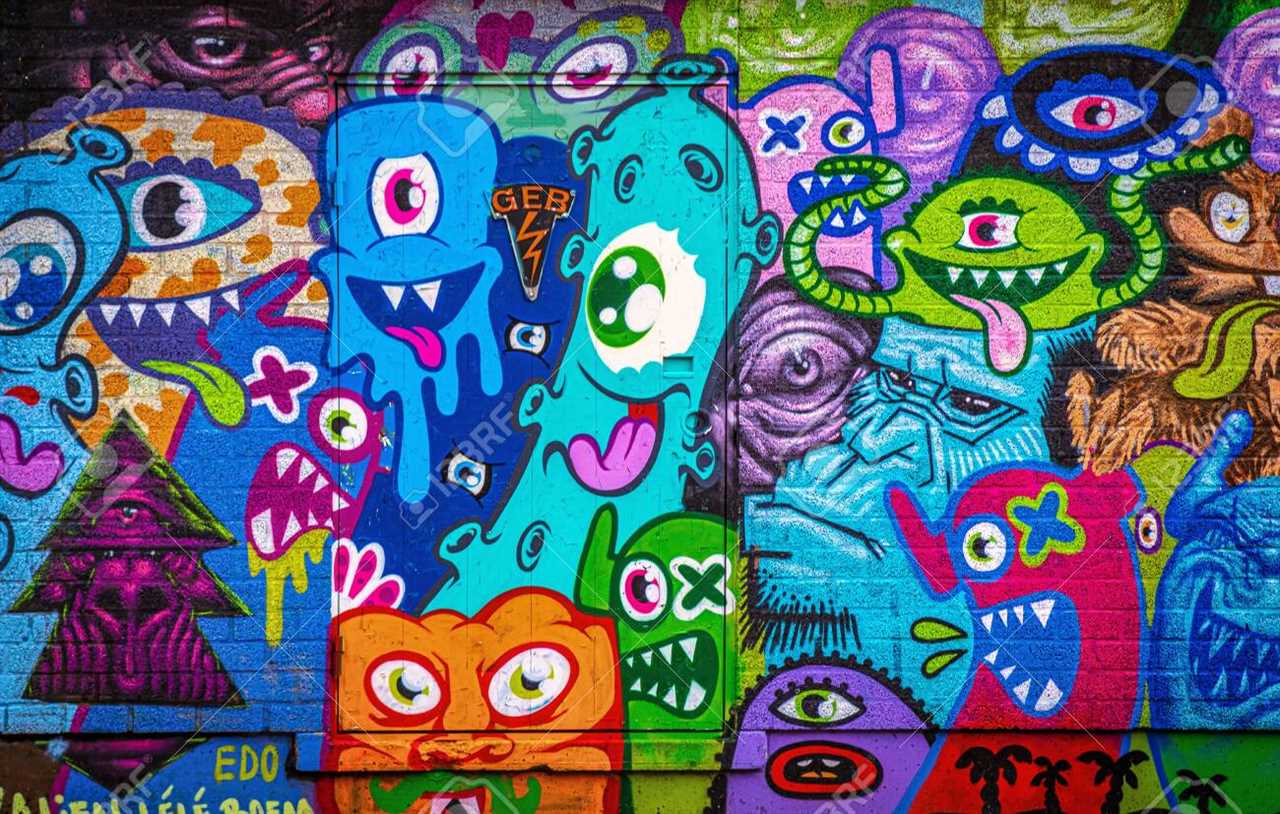
- Drip and splatter techniques involve allowing paint to drip or splatter onto the surface, creating a random and energetic effect.
- Artists may achieve this effect by using techniques such as flicking, throwing, or pouring paint onto the surface.
- This technique adds a sense of movement and spontaneity to the artwork.
4. Bubble Letters
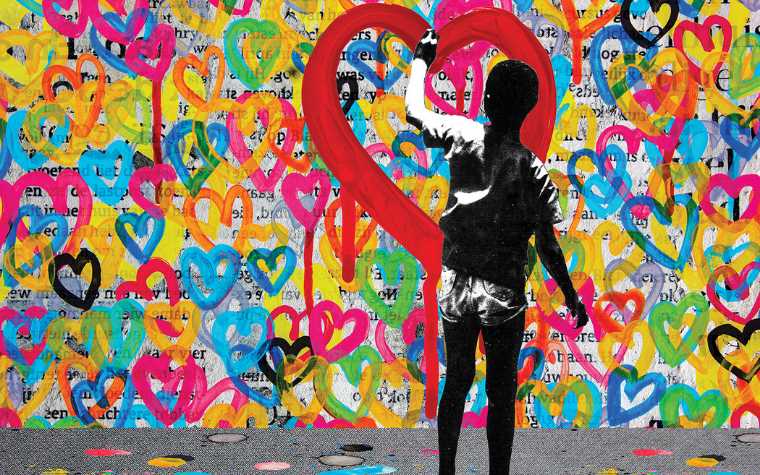
- Bubble letters are a popular style in graffiti art, characterized by their round and bulbous shapes.
- Artists create these letters by starting with a simple outline and then adding depth and shading.
- Colorful gradients and shadows are often used to make the letters appear three-dimensional and vibrant.
These are just a few of the colorful techniques used in graffiti art. Each artist has their own unique style and approach, making graffiti art a diverse and ever-evolving art form.
Famous Graffiti Artists and Their Impact
Graffiti art has become a significant form of expression that goes beyond mere vandalism. Many talented artists have emerged from the underground graffiti scene and have made a lasting impact on the art world. Here are just a few of the famous graffiti artists and their contributions:
Banksy: Perhaps the most famous graffiti artist of all time, Banksy is known for his politically charged stencil art. His satirical and thought-provoking pieces have appeared on walls and public spaces around the world. Banksy’s anonymity and ability to make powerful social commentary through his art have made him a legend in the street art community.
Shepard Fairey: Shepard Fairey gained global recognition with his “Hope” poster featuring Barack Obama during the 2008 presidential campaign. Inspired by punk rock and DIY aesthetics, Fairey’s street art often incorporates political and social messages. His iconic graphic style has had a significant impact on the world of graffiti and contemporary art.
Keith Haring: Keith Haring’s bold and instantly recognizable drawings became synonymous with the New York City street art scene in the 1980s. His playful figures and energetic lines brought a sense of joy and inclusivity to the streets. Haring used his art to raise awareness about social issues, particularly those related to the LGBTQ+ community and AIDS.
Jean-Michel Basquiat: Basquiat started his career as a graffiti artist under the tag SAMO. His raw and expressive paintings blended street art, graffiti, and neo-expressionism. Basquiat’s work often tackled themes of racism, power, and spirituality, and he remains a celebrated artist to this day.
Blek le Rat: Regarded as the “Father of stencil graffiti,” Blek le Rat was one of the first artists to use stencils in his street art. His iconic rat stencils could be found all over the streets of Paris in the 1980s. Blek le Rat’s influence on street art and graffiti culture is immeasurable.
These artists have not only transformed the urban landscape but have also challenged traditional notions of art. Their impact continues to inspire and influence a new generation of graffiti artists seeking to make their mark on the world.
The Controversy Surrounding Graffiti Art
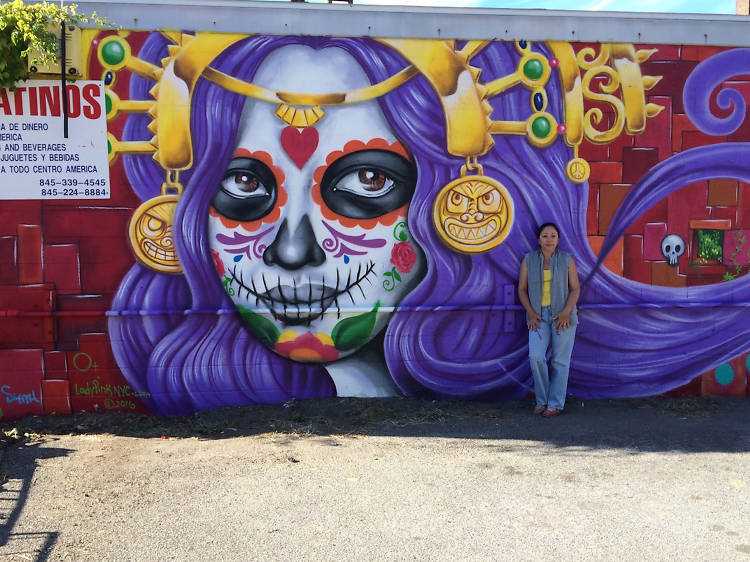
Graffiti art is a highly controversial form of artistic expression. While some people consider it to be a legitimate art form that adds vibrancy and creativity to urban spaces, others view it as vandalism and illegal activity.
One of the main arguments against graffiti art is that it is often done without permission on private property. Property owners and city officials often see graffiti as a nuisance and an eyesore, as it can damage buildings and infrastructure. Graffiti artists may also face legal consequences, including fines and even imprisonment, for defacing public or private property.
However, supporters of graffiti art argue that it can be a powerful tool for social and political expression. Street art has historically been used to convey messages of resistance, protest, and cultural identity. Graffiti art can also serve as a form of storytelling and bring attention to important social issues that are often overlooked. It allows artists to reach a wider audience and challenge the status quo.
Another point of contention is the distinction between graffiti art and graffiti tagging. While graffiti art is often seen as a carefully crafted and visually appealing form of expression, graffiti tagging involves the quick and repetitive marking of one’s name or initials. Many people argue that tagging is not art and is simply vandalism. This distinction is often the source of debate within the graffiti community and among its critics.
Ultimately, the controversy surrounding graffiti art is reflective of the broader debate around the role of art in public spaces and the boundaries of creative expression. While some argue for stricter regulations and enforcement against graffiti, others advocate for more support and recognition of graffiti as a legitimate art form. The ongoing discussion highlights the complex and divergent opinions surrounding this vibrant and often polarizing art form.

I am a mural enthusiast and a fervent admirer of street art. Rather than creating murals myself, I am passionate about collecting them. My love for street art knows no bounds. I am dedicated to curating and cherishing these artworks that grace the streets. My collection stands as a testament to my profound appreciation for this form of artistic expression.
read about me



